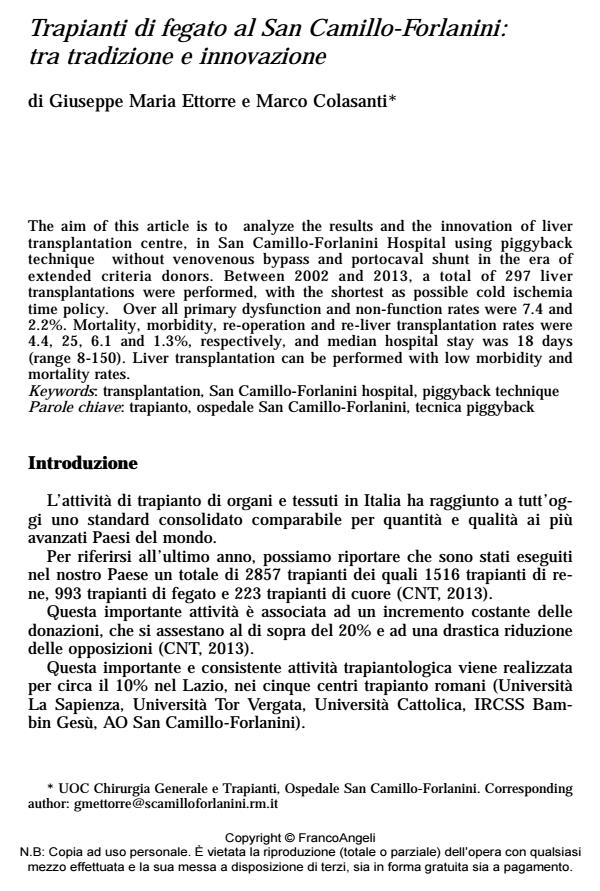Trapianti di fegato al San Camillo-Forlanini: tra tradizione e innovazione
Titolo Rivista SALUTE E SOCIETÀ
Autori/Curatori Giuseppe Maria Ettorre, Marco Colasanti
Anno di pubblicazione 2014 Fascicolo 2014/2
Lingua Italiano Numero pagine 8 P. 41-48 Dimensione file 477 KB
DOI 10.3280/SES2014-002005
Il DOI è il codice a barre della proprietà intellettuale: per saperne di più
clicca qui
Qui sotto puoi vedere in anteprima la prima pagina di questo articolo.
Se questo articolo ti interessa, lo puoi acquistare (e scaricare in formato pdf) seguendo le facili indicazioni per acquistare il download credit. Acquista Download Credits per scaricare questo Articolo in formato PDF

FrancoAngeli è membro della Publishers International Linking Association, Inc (PILA)associazione indipendente e non profit per facilitare (attraverso i servizi tecnologici implementati da CrossRef.org) l’accesso degli studiosi ai contenuti digitali nelle pubblicazioni professionali e scientifiche
The aim of this article is to analyze the results and the innovation of liver transplantation centre, in San Camillo-Forlanini Hospital using piggyback technique without venovenous bypass and portocaval shunt in the era of extended criteria donors. Between 2002 and 2013, a total of 297 liver transplantations were performed, with the shortest as possible cold ischemia time policy. Over all primary dysfunction and non-function rates were 7.4 and 2.2%. Mortality, morbidity, re-operation and re-liver transplantation rates were 4.4, 25, 6.1 and 1.3%, respectively, and median hospital stay was 18 days (range 8-150). Liver transplantation can be performed with low morbidity and mortality rates.
Parole chiave:Trapianto, ospedale San Camillo-Forlanini, tecnica piggyback
Giuseppe Maria Ettorre, Marco Colasanti, Trapianti di fegato al San Camillo-Forlanini: tra tradizione e innovazione in "SALUTE E SOCIETÀ" 2/2014, pp 41-48, DOI: 10.3280/SES2014-002005